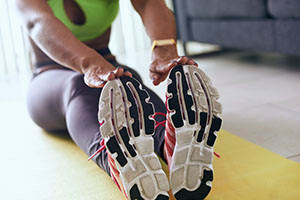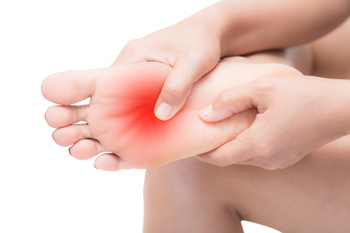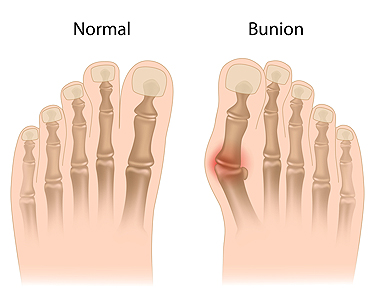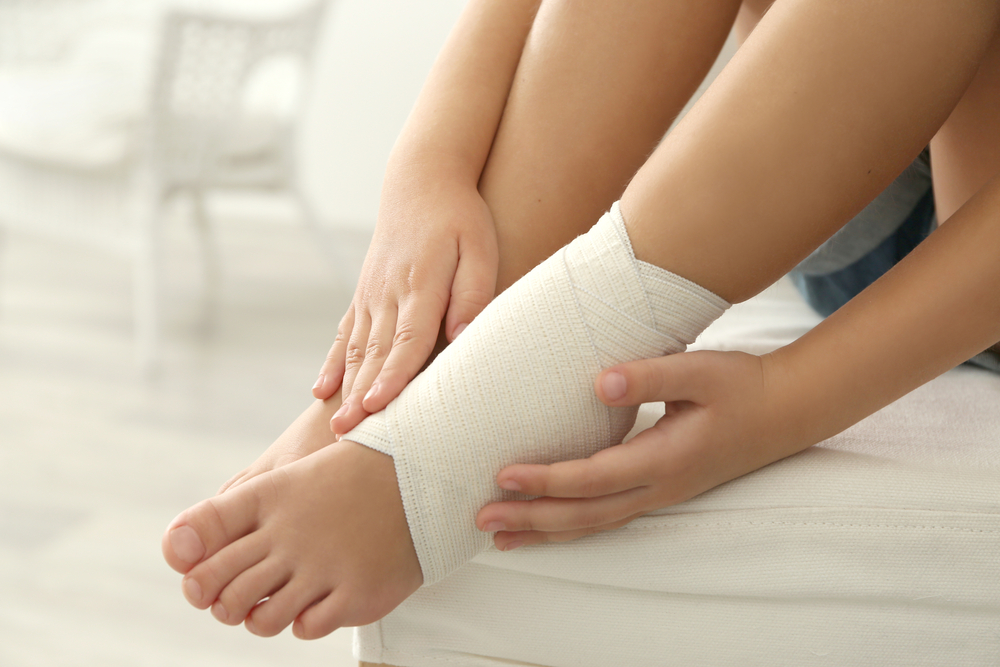Connect With Us
Blog
Items filtered by date: March 2021
Running, Warming Up And Cooling Down
 The benefits of exercising generally affects the overall body. Preventing running injuries is important in keeping the body strong, and can be accomplished in several ways. These can include properly stretching and warming up before any running activity begins, and cooling down when it is completed. It is beneficial to practice running that coincides with your fitness level, and wearing shoes that fit correctly may help to prevent painful running injuries. Many people who enjoy running often find it is helpful to gradually increase the time, mileage, and type of running that is pursued. If you would like more information about how running injuries can affect the feet, and how to prevent them, please schedule a consultation with a podiatrist.
The benefits of exercising generally affects the overall body. Preventing running injuries is important in keeping the body strong, and can be accomplished in several ways. These can include properly stretching and warming up before any running activity begins, and cooling down when it is completed. It is beneficial to practice running that coincides with your fitness level, and wearing shoes that fit correctly may help to prevent painful running injuries. Many people who enjoy running often find it is helpful to gradually increase the time, mileage, and type of running that is pursued. If you would like more information about how running injuries can affect the feet, and how to prevent them, please schedule a consultation with a podiatrist.
Exercising your feet regularly with the proper foot wear is a great way to prevent injuries. If you have any concerns about your feet, contact Scott Matthews, DPM, MD of Salem Foot Care . Our doctor will treat your foot and ankle needs.
How to Prevent Running Injuries
Many common running injuries are caused by overuse and overtraining. When the back of the kneecap starts wearing out and starts causing pain in your knee, this is commonly referred to as runner’s knee. Runner’s knee is a decrease in strength in your quadriceps and can occur if you’re not wearing properly fitted or supporting shoes. To prevent runner’s knee, focusing on hip strengthening is a good idea, as well as strengthening your quads to keep the kneecaps aligned.
What Are Some Causes of Running Injuries?
- One cause of a common running injury is called iliotibial band syndrome.
- Plantar fasciitis is also another common injury.
- Stress fractures can occur from overtraining, lack of calcium, or even your running style.
Best Ways to Prevent Running Injuries
- Wear footwear that fits properly and suits your running needs.
- Running shoes are the only protective gear that runners have to safeguard them from injury.
- Make a training schedule. Adding strengthening exercises as well as regular stretching can help keep you strong and limber and can lessen the possibility of injuries.
- Stretching keeps muscles limber; this will help you gain better flexibility.
If you have any questions please feel free to contact our office located in Wikesboro, NC . We offer the newest diagnostic and treatment technologies for all your foot and ankle needs.
Peripheral Neuropathy 101
 Peripheral neuropathy is caused when the nerves in the extremities such as the hands or feet are damaged. Neuropathy is generally indicated by pain, numbness, tingling, or a pins and needles sensation in the feet. While one of the most common causes of peripheral neuropathy is diabetes, it can also be caused by metabolic disorders, alcohol, trauma, vitamin deficiency, and even genetics. Treatment options for neuropathy are often individualized and focused on the cause of the neuropathy. Therefore, patients who are experiencing the signs of peripheral neuropathy in their feet should visit a podiatrist for a proper diagnosis and treatment method.
Peripheral neuropathy is caused when the nerves in the extremities such as the hands or feet are damaged. Neuropathy is generally indicated by pain, numbness, tingling, or a pins and needles sensation in the feet. While one of the most common causes of peripheral neuropathy is diabetes, it can also be caused by metabolic disorders, alcohol, trauma, vitamin deficiency, and even genetics. Treatment options for neuropathy are often individualized and focused on the cause of the neuropathy. Therefore, patients who are experiencing the signs of peripheral neuropathy in their feet should visit a podiatrist for a proper diagnosis and treatment method.
Neuropathy
Neuropathy can be a potentially serious condition, especially if it is left undiagnosed. If you have any concerns that you may be experiencing nerve loss in your feet, consult with Scott Matthews, DPM, MD from Salem Foot Care . Our doctor will assess your condition and provide you with quality foot and ankle treatment for neuropathy.
What Is Neuropathy?
Neuropathy is a condition that leads to damage to the nerves in the body. Peripheral neuropathy, or neuropathy that affects your peripheral nervous system, usually occurs in the feet. Neuropathy can be triggered by a number of different causes. Such causes include diabetes, infections, cancers, disorders, and toxic substances.
Symptoms of Neuropathy Include:
- Numbness
- Sensation loss
- Prickling and tingling sensations
- Throbbing, freezing, burning pains
- Muscle weakness
Those with diabetes are at serious risk due to being unable to feel an ulcer on their feet. Diabetics usually also suffer from poor blood circulation. This can lead to the wound not healing, infections occurring, and the limb may have to be amputated.
Treatment
To treat neuropathy in the foot, podiatrists will first diagnose the cause of the neuropathy. Figuring out the underlying cause of the neuropathy will allow the podiatrist to prescribe the best treatment, whether it be caused by diabetes, toxic substance exposure, infection, etc. If the nerve has not died, then it’s possible that sensation may be able to return to the foot.
Pain medication may be issued for pain. Electrical nerve stimulation can be used to stimulate nerves. If the neuropathy is caused from pressure on the nerves, then surgery may be necessary.
If you have any questions, please feel free to contact our office located in Wikesboro, NC . We offer the newest diagnostic and treatment technologies for all your foot care needs.
How Podiatrists Treat Bunions
 Bunions form when the joint of the big toe gets pulled out of line resulting in the big toe being turned towards the rest of the toes. They appear as a bony lump at the main joint of the big toe, and they can cause inflammation, pain, and corns/calluses. Patients who notice the signs of a bunion should visit a podiatrist for treatment and relief. A podiatrist will usually start with nonsurgical treatments. These options include bunion pads, splints, ice, special footwear, medications, and orthotics. Severe bunions, or bunions that do not respond to other treatments, may require surgery in order to remedy the problem. Because untreated bunions can cause pain, loss of movement in the big toe and bursitis, seeking treatment is highly recommended.
Bunions form when the joint of the big toe gets pulled out of line resulting in the big toe being turned towards the rest of the toes. They appear as a bony lump at the main joint of the big toe, and they can cause inflammation, pain, and corns/calluses. Patients who notice the signs of a bunion should visit a podiatrist for treatment and relief. A podiatrist will usually start with nonsurgical treatments. These options include bunion pads, splints, ice, special footwear, medications, and orthotics. Severe bunions, or bunions that do not respond to other treatments, may require surgery in order to remedy the problem. Because untreated bunions can cause pain, loss of movement in the big toe and bursitis, seeking treatment is highly recommended.
If you are suffering from bunions, contact Scott Matthews, DPM, MD of Salem Foot Care . Our doctor can provide the care you need to keep you pain-free and on your feet.
What Is a Bunion?
A bunion is formed of swollen tissue or an enlargement of boney growth, usually located at the base joint of the toe that connects to the foot. The swelling occurs due to the bones in the big toe shifting inward, which impacts the other toes of the foot. This causes the area around the base of the big toe to become inflamed and painful.
Why Do Bunions Form?
Genetics – Susceptibility to bunions are often hereditary
Stress on the feet – Poorly fitted and uncomfortable footwear that places stress on feet, such as heels, can worsen existing bunions
How Are Bunions Diagnosed?
Doctors often perform two tests – blood tests and x-rays – when trying to diagnose bunions, especially in the early stages of development. Blood tests help determine if the foot pain is being caused by something else, such as arthritis, while x-rays provide a clear picture of your bone structure to your doctor.
How Are Bunions Treated?
- Refrain from wearing heels or similar shoes that cause discomfort
- Select wider shoes that can provide more comfort and reduce pain
- Anti-inflammatory and pain management drugs
- Orthotics or foot inserts
- Surgery
If you have any questions, please feel free to contact our office located in Wikesboro, NC . We offer the newest diagnostic and treatment technologies for all your foot care needs.
Signs and Causes of Athlete’s Foot
 Athlete’s foot is a fungal infection that affects the skin of the feet, mainly in between the toes. The infection usually causes a rash that becomes red, itchy, scaly, and dry. Other signs of athlete’s foot can include a foul odor, cracked skin, peeling of the skin, and a burning sensation. While anyone can get athlete’s foot, the fungus that causes athlete’s foot is usually spread in warm and moist environments such as communal showers or public pools. Athlete’s foot can also spread from sharing items that touch the feet. Patients who believe they have developed this condition should visit a podiatrist for a professional diagnosis and treatment plan.
Athlete’s foot is a fungal infection that affects the skin of the feet, mainly in between the toes. The infection usually causes a rash that becomes red, itchy, scaly, and dry. Other signs of athlete’s foot can include a foul odor, cracked skin, peeling of the skin, and a burning sensation. While anyone can get athlete’s foot, the fungus that causes athlete’s foot is usually spread in warm and moist environments such as communal showers or public pools. Athlete’s foot can also spread from sharing items that touch the feet. Patients who believe they have developed this condition should visit a podiatrist for a professional diagnosis and treatment plan.
Athlete’s Foot
Athlete’s foot is often an uncomfortable condition to experience. Thankfully, podiatrists specialize in treating athlete’s foot and offer the best treatment options. If you have any questions about athlete’s foot, consult with Scott Matthews, DPM, MD from Salem Foot Care . Our doctor will assess your condition and provide you with quality treatment.
What Is Athlete’s Foot?
Tinea pedis, more commonly known as athlete’s foot, is a non-serious and common fungal infection of the foot. Athlete’s foot is contagious and can be contracted by touching someone who has it or infected surfaces. The most common places contaminated by it are public showers, locker rooms, and swimming pools. Once contracted, it grows on feet that are left inside moist, dark, and warm shoes and socks.
Prevention
The most effective ways to prevent athlete’s foot include:
- Thoroughly washing and drying feet
- Avoid going barefoot in locker rooms and public showers
- Using shower shoes in public showers
- Wearing socks that allow the feet to breathe
- Changing socks and shoes frequently if you sweat a lot
Symptoms
Athlete’s foot initially occurs as a rash between the toes. However, if left undiagnosed, it can spread to the sides and bottom of the feet, toenails, and if touched by hand, the hands themselves. Symptoms include:
- Redness
- Burning
- Itching
- Scaly and peeling skin
Diagnosis and Treatment
Diagnosis is quick and easy. Skin samples will be taken and either viewed under a microscope or sent to a lab for testing. Sometimes, a podiatrist can diagnose it based on simply looking at it. Once confirmed, treatment options include oral and topical antifungal medications.
If you have any questions, please feel free to contact our office located in Wikesboro, NC . We offer the newest diagnostic and treatment technologies for all your foot care needs.
What Is a High Ankle Sprain?
 A high ankle sprain, also known as a syndesmosis injury, can occur when the ankle is forcefully twisted upwards and away from your body during physical activity. This can happen while playing contact sports. For example, if somebody falls onto the outside of your ankle, it may force the ankle to move beyond its normal range, resulting in a high ankle sprain. A high ankle sprain differs from the more common lateral ankle sprain by its symptoms. While a lateral ankle sprain is painful, the pain from a high ankle sprain is usually more severe. It may be extremely difficult to bear weight on the ankle. However, high ankle sprains generally don’t bruise or swell as much as lateral ankle sprains. If you sustain any type of ankle sprain, it is suggested that you see a podiatrist for treatment.
A high ankle sprain, also known as a syndesmosis injury, can occur when the ankle is forcefully twisted upwards and away from your body during physical activity. This can happen while playing contact sports. For example, if somebody falls onto the outside of your ankle, it may force the ankle to move beyond its normal range, resulting in a high ankle sprain. A high ankle sprain differs from the more common lateral ankle sprain by its symptoms. While a lateral ankle sprain is painful, the pain from a high ankle sprain is usually more severe. It may be extremely difficult to bear weight on the ankle. However, high ankle sprains generally don’t bruise or swell as much as lateral ankle sprains. If you sustain any type of ankle sprain, it is suggested that you see a podiatrist for treatment.
Although ankle sprains are common, they aren’t always minor injuries. If you need your ankle injury looked at, contact Scott Matthews, DPM, MD from Salem Foot Care . Our doctor can provide the care you need to keep you pain-free and on your feet.
How Does an Ankle Sprain Occur?
Ankle sprains are the result of a tear in the ligaments within the ankle. These injuries may happen when you make a rapid shifting movement while your foot is planted. A less common way to sprain your ankle is when your ankle rolls inward while your foot turns outward.
What Are the Symptoms?
- Pain at the sight of the tear
- Bruising/Swelling
- Ankle area is tender to touch
- In severe cases, may hear/feel something tear
- Skin discoloration
Preventing a Sprain
- Wearing appropriate shoes for the occasion
- Stretching before exercises and sports
- Knowing your limits
Treatment of a Sprain
In many cases, the RICE method (Rest, Ice, Compression, and Elevate) is used to treat ankle sprains. However, you should see a podiatrist to see which treatment option would work best with your injury. In severe cases, surgery may be required.
It is important to ask your doctor about rehab options after you receive treatment for your injury. Stretching, strength training, and balance exercises may help the ankle heal while also preventing further injury.
If you have any questions, please feel free to contact our office located in Wikesboro, NC . We offer the newest diagnostic and treatment technologies for all your foot care needs.
Blog Archives
- March 2025
- February 2025
- January 2025
- December 2024
- November 2024
- October 2024
- September 2024
- August 2024
- July 2024
- June 2024
- May 2024
- April 2024
- March 2024
- February 2024
- January 2024
- December 2023
- November 2023
- October 2023
- September 2023
- August 2023
- July 2023
- June 2023
- May 2023
- April 2023
- March 2023
- February 2023
- January 2023
- December 2022
- November 2022
- October 2022
- September 2022
- August 2022
- July 2022
- June 2022
- May 2022
- April 2022
- March 2022
- February 2022
- January 2022
- December 2021
- November 2021
- October 2021
- September 2021
- August 2021
- July 2021
- June 2021
- May 2021
- April 2021
- March 2021
- February 2021
- January 2021
- December 2020
- November 2020
- October 2020
- September 2020
- August 2020
- July 2020
- June 2020
- May 2020
- April 2020
- March 2020
- February 2020
- January 2020
- December 2019
- November 2019
- October 2019
- September 2019
- August 2019
- July 2019
- June 2019
- May 2019
- April 2019
- March 2019
- February 2019
- January 2019
- December 2018
- November 2018
- October 2018
- September 2018
- August 2018
- July 2018
- June 2018
- May 2018

